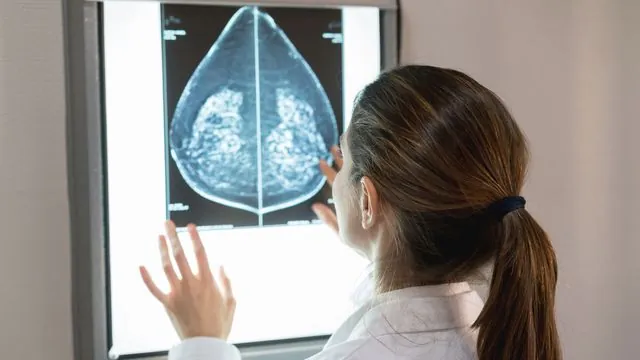
Revolutionary AI Could Transform Breast Cancer Screenings – But Are There Risks?
2025-05-06
Author: Daniel
AI's Groundbreaking Role in Detecting Interval Breast Cancers
A groundbreaking study from the UCLA Health Jonsson Comprehensive Cancer Center reveals that artificial intelligence (AI) has the potential to transform breast cancer screenings by detecting interval cancers—those sneaky tumors that develop between routine screenings—before they become advanced and harder to treat. This innovation could dramatically change screening practices, allowing for earlier interventions and significantly improving patient outcomes.
How AI Outperformed Human Eyes in Screening
Published in the Journal of the National Cancer Institute, the study unveiled that AI systems can identify so-called “mammographically-visible” interval cancers earlier by flagging them during screenings. This includes tumors that, while visible, were overlooked by human radiologists, or those showing faint signs that easily escape detection.
Reducing Interval Breast Cancers by 30%?
Research estimates suggest that integrating AI into breast cancer screenings could slash the incidence of interval cases by a staggering 30%. Dr. Tiffany Yu, a key researcher and assistant professor of Radiology, explained the significance: "Catching these cancers early can be the difference between life and death, leading to less aggressive treatments and better overall outcomes for patients."
Unique Challenges in U.S. vs. European Screening Practices
While similar studies have been conducted abroad, this research marks a significant exploration of AI’s capabilities in the U.S., where screening protocols differ from Europe. In the U.S., most mammograms use advanced digital breast tomosynthesis (3D mammography), with annual screenings, while European models typically rely on traditional 2D digital mammography every two to three years.
Delving into the Data: A Retrospective Analysis
The study analyzed nearly 185,000 mammograms from 2010 to 2019, focusing on 148 cases of interval breast cancer. Researchers employed a European classification system, identifying issues like missed readings and errors, and utilized an AI tool called Transpara to revisit earlier screenings and detect any signs that radiologists might have missed.
Stunning AI Accuracy and Room for Improvement
The results were nothing short of impressive: the AI flagged 76% of mammograms deemed normal yet linked to an interval cancer, and 90% of instances where tumors were visible but misread. It identified nearly 89% of cancers showing minimal signs actionable for treatment. Yet, the technology faced struggles with tumors that were completely invisible, marking just over half of those accurately.
Caution Ahead: AI's Limitations and Future Needs
Despite its promise, Dr. Hannah Milch, another lead on the study, cautions about AI's current limitations. "While our findings are promising, we encountered several inaccuracies that require real-world exploration. For instance, the AI flagged 69% of occult cancers, but accurately pinpointed the tumor only 22% of the time," she explained.
A Second Set of Eyes in the Fight Against Cancer
Looking ahead, larger prospective studies are essential to understand how radiologists can effectively integrate AI into real-world practices. The potential is clear: AI could evolve into a valuable tool, enhancing the ability of doctors to catch hard-to-detect cancers and ultimately saving lives. "We’re not suggesting AI replace human judgment, but use it as a mighty ally in the battle against interval breast cancers," Dr. Yu concluded.



 Brasil (PT)
Brasil (PT)
 Canada (EN)
Canada (EN)
 Chile (ES)
Chile (ES)
 Česko (CS)
Česko (CS)
 대한민국 (KO)
대한민국 (KO)
 España (ES)
España (ES)
 France (FR)
France (FR)
 Hong Kong (EN)
Hong Kong (EN)
 Italia (IT)
Italia (IT)
 日本 (JA)
日本 (JA)
 Magyarország (HU)
Magyarország (HU)
 Norge (NO)
Norge (NO)
 Polska (PL)
Polska (PL)
 Schweiz (DE)
Schweiz (DE)
 Singapore (EN)
Singapore (EN)
 Sverige (SV)
Sverige (SV)
 Suomi (FI)
Suomi (FI)
 Türkiye (TR)
Türkiye (TR)
 الإمارات العربية المتحدة (AR)
الإمارات العربية المتحدة (AR)